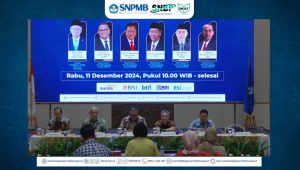Tuberculosis (TB) remains one of the top 10 causes of death worldwide and is ranked higher than human immunodeficiency virus (HIV)/acquired immunodeficiency syndrome (AIDS). TB affects more than 10 million people worldwide and causes 1.4 million deaths annually, according to the World Health Organization (WHO) TB report published in 2019. The burden of disease is highest in Southeast Asia and Africa, and Indonesia has the second highest annual TB incidence of any country globally. In 2019, Indonesia failed to achieve the treatment success rate (TSR) target set by the WHO. Unsuccessfully treated cases can contribute to drug resistance, and it is crucial to optimize antimycobacterial treatment to reduce the development of TB resistance.
Isoniazid (INH), as the key drug of first-line anti-TB treatment, exerts potent early bactericidal activity (EBA) by inhibiting the synthesis of long-chain mycolic acids. INH is prescribed at a dose of 4–6 mg/kg bodyweight. However, INH exhibits considerable interindividual variability (IIV) in its pharmacokinetic (PK) effects. Moreover, in 64-88% of patients with TB in Indonesia, the effects of INH are suboptimal with the standard dose. Antimicrobial activity is well-correlated with INH exposure. The wide IIV seen in the response to INH could lead to suboptimal concentrations in some patients, resulting in treatment failure and a risk of drug resistance. Maintaining INH concentrations within the effective therapeutic range is important to improve clinical outcomes.
Population PK modeling is a robust approach to determine the IIV of drug concentrations and PK within a given population and to identify the potential covariates that may contribute to the IIV. Population PK model–based therapeutic drug monitoring (TDM) is a potential tool to overcome the problem of wide variability in responses to INH by helping maintain the drug concentration within the effective range. Previous population PK models revealed several factors that can affect INH concentrations, including age, sex, HIV status, and NAT2 polymorphisms. However, no population PK model for INH has been reported for Indonesian patients with TB. Therefore, we developed a population PK model to estimate PK parameters and to identify factors that affect the IIV of INH among Indonesian patients with TB.
Patients aged ≥ 18 years who were diagnosed with TB and who received INH-based regimen that has been administered in Dr. Soetomo General Academic Hospital. INH concentrations, N-acetyltransferase 2 (NAT2) genotypes, and clinical data were collected the subjects. A nonlinear mixed-effect model was used to develop and validate the population PK model.
A total of 107 patients with TB (with 153 samples) involved in this study shows a one compartment model with allometric scaling for bodyweight effect described well the PK of INH. The NAT2 acetylator phenotype significantly affected INH clearance. The mean clearance rates for the rapid, intermediate, and slow NAT2 acetylator phenotypes were 55.9, 37.8, and 17.7 L/h, respectively. Our model was well-validated through visual predictive checks and bootstrapping. This research successfully established the population PK model for INH in Indonesian patients with TB using the NAT2 acetylator phenotype as a significant covariate. Our Bayesian forecasting model should enable optimization of TB treatment for INH in Indonesian patients with TB.
Author: Dr. Soedarsono, dr., Sp.P(K)
Detailed information from this research can be viewed in our article at https://www.sciencedirect.com/science/article/pii/S1201971222000042?via%3Dihub
Soedarsono Soedarsono, Rannissa Puspita Jayanti, Ni Made Mertaniasih, Tutik Kusmiati, Ariani Permatasari, Dwi Wahyu Indrawanto, Anita Nur Charisma, Rika Yuliwulandari, Nguyen Phuoc Long, Young-Kyung Choi, Pham Quang Hoa, Pham Vinh Hoa, Yong-Soon Cho, Jae-Gook Shin. Development of population pharmacokinetics model of isoniazid in Indonesian patients with tuberculosis. International Journal of Infectious Diseases. 2022; 117: 8-14. https://doi.org/10.1016/j.ijid.2022.01.003









